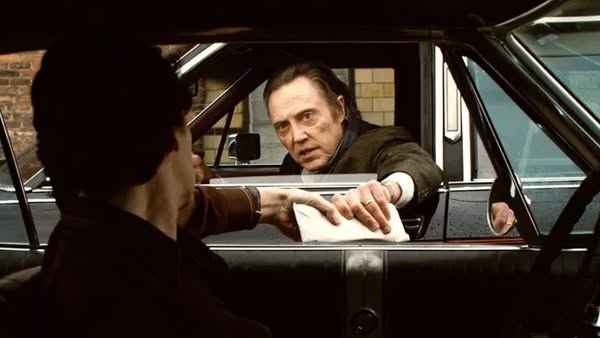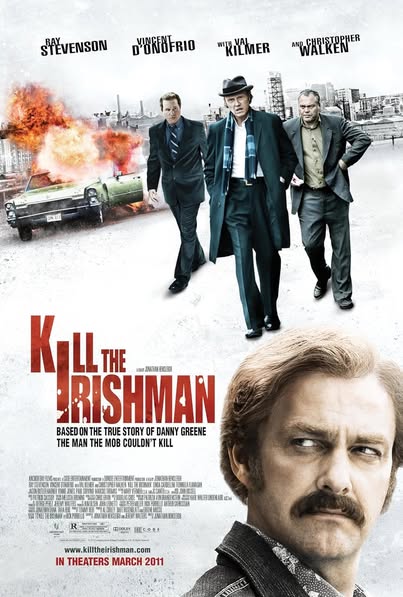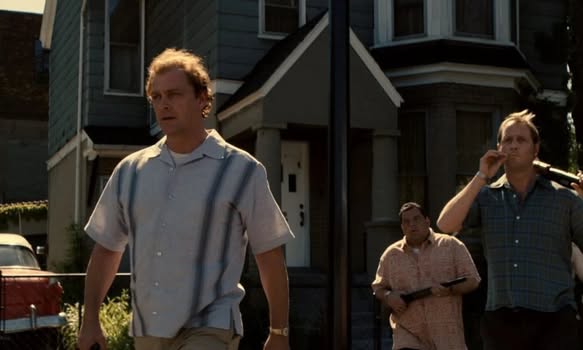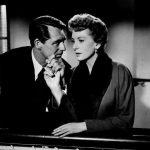Kill the Irishman (2011)

Kill the Irishman (2011) is a gripping crime drama that chronicles the real-life story of Danny Greene, a notorious Irish-American mobster who defied the odds in the violent world of organized crime in Cleveland during the 1970s. Directed by Jonathan Hensleigh, the film offers a compelling blend of historical events and cinematic storytelling, showcasing the fierce battles for power and control among rival gangs. With its engaging narrative and strong performances, the film stands out as a noteworthy entry in the crime genre.
The film centers around Danny Greene, portrayed by Ray Stevenson, who rises through the ranks of the criminal underworld with a combination of charisma, cunning, and sheer determination. Greene’s story begins with his humble beginnings as a dockworker and quickly evolves as he becomes a key player in the Cleveland mafia. His relentless pursuit of power brings him into direct conflict with both the Italian mob and law enforcement, showcasing his audacity and resilience. The narrative captures Greene’s transformation from a small-time criminal to a formidable figure who challenges the entrenched mafia system.
One of the film’s most striking aspects is its depiction of the violent and tumultuous environment of organized crime during this era. The story unfolds against a backdrop of intense mob wars, with Greene’s defiance leading to brutal confrontations and a series of bombings that rocked the city. The film does not shy away from showcasing the brutal realities of mob life, with graphic violence that serves to underscore the stakes involved in Greene’s quest for dominance. This gritty portrayal adds depth to the narrative, revealing both the allure and the dangers of a life steeped in crime.

The character of Danny Greene is complex and multifaceted. Stevenson delivers a powerful performance, capturing Greene’s charm, intelligence, and ruthless ambition. The film explores his relationships with various characters, including his loyal allies and dangerous adversaries. Notably, the portrayal of his friendship with fellow mobster John Nardi, played by Vincent D’Onofrio, adds an emotional layer to the story, illustrating the fragile nature of loyalty within the criminal world. As alliances shift and betrayals unfold, Greene’s journey becomes a poignant reflection on the costs of ambition and the fragility of power.
Kill the Irishman also highlights the cultural tensions between the Irish and Italian communities in Cleveland during this period. The film delves into the dynamics of these rival factions, portraying the deep-seated animosities that fuel the violence. The interactions between Greene and his adversaries reveal the complexities of identity and loyalty in a world where ethnic ties often dictate allegiances. This exploration adds a historical dimension to the film, situating Greene’s story within the larger context of American organized crime.

The film’s pacing is brisk, effectively balancing moments of intense action with quieter, more introspective scenes. Hensleigh’s direction maintains a steady rhythm, drawing viewers into the escalating tension of the narrative. The cinematography captures the gritty aesthetic of 1970s Cleveland, using muted colors and atmospheric lighting to enhance the film’s tone. The attention to detail in the production design transports audiences to a bygone era, creating an immersive experience that feels both authentic and engaging.
The supporting cast includes notable performances from actors such as Christopher Walken, who plays the seasoned mobster and mentor figure, and Linda Cardellini, who portrays Greene’s love interest. Each character contributes to the rich tapestry of the story, adding layers of complexity to Greene’s life and the world he inhabits. Their interactions with Greene further illustrate the personal costs of his criminal lifestyle, as relationships become strained by the violent choices he makes.

In conclusion, Kill the Irishman is a compelling and engaging film that effectively captures the tumultuous life of Danny Greene and the violent world of organized crime in Cleveland. Through its powerful performances, gritty storytelling, and rich historical context, the film offers a nuanced exploration of ambition, loyalty, and the consequences of a life lived on the edge. Hensleigh’s direction and Stevenson’s portrayal of Greene create a memorable cinematic experience that resonates with viewers, making it a notable addition to the canon of crime dramas. Ultimately, the film serves as both a thrilling crime saga and a poignant reflection on the complexities of loyalty and identity in a world defined by violence and ambition.











